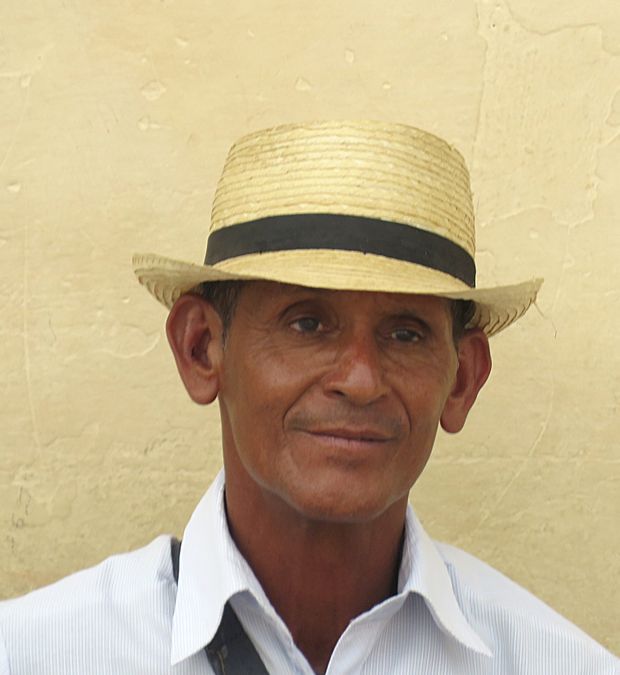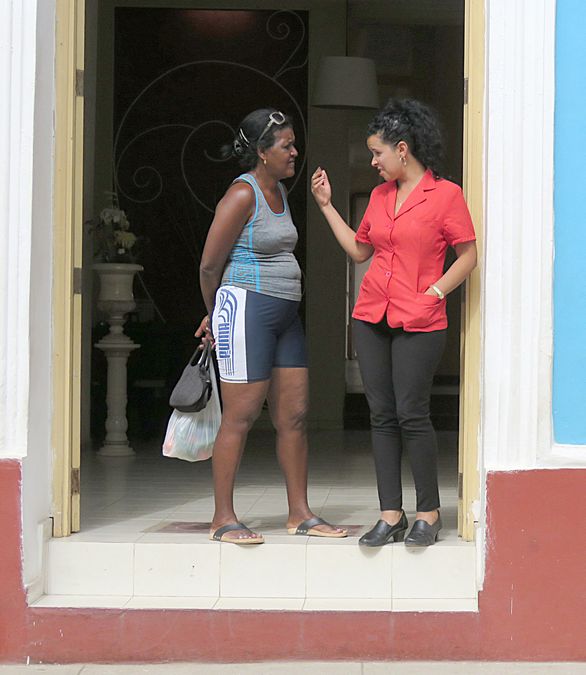Undiscovered Cuba - March 11 - March 22, 2018
Cuban Currency
Cuba has 2 currencies. The Cuban Peso or CUP is the currency
that wages are paid in and some basic goods are sold in. The
convertible peso or CUC is the currency tourists must exchange
their currency for. Many goods are sold, even to Cubans, only in
CUCs. After the Revolution, possession of the U.S. dollar was
outlawed in Cuba until 1993, when it was permitted. The CUC
replaced the U.S. dollar in 2004.
Raul Castro indicated the dual currency system would be
eliminated, but it has not yet happened. CUCs are worth much
more than the Cuban peso. We were advised to bring clean Euros to
convert to CUCs, since there is a 13% charge to convert
U.S. dollars to CUCs (3% for Euros).
We could not use
credit cards in Cuba.
Page Three - Trinidad, Cuba
Trinidad was founded by Diego de Velasquez in 1514 as a base for expeditions into
the New World during colonial times. Now it is a World Heritage site and still has
elaborate colonial palaces, cobbled streets, and tiled roofs from the Spanish colonial period.

Back in Trinidad in the afternoon to do a walking tour.
The empty building in the background on the right is
owned by the Government, which announced plans
several years ago to make it a hotel. Nothing has happened.

Palacio Cantero in Trinidad
Inside Palacio Cantero courtyard, an early 19th century mansion
owned by a German planter,
who acquired vast sugar estates.

School kids at the colonial palace, now a museum

Cobblestoned street in Trinidad and another old car

Plaza Mayor, Trinidad town center

Iglesia Parroquial de la Santisma Trinidad, Cuba's largest church,
a 19th century
cathedral renowned for its acoustics and
altars of precious woods.

Inside Iglesia Church

Pat in front of bougainvillea at the restaurant where we later
ate dinner. Peggy from our group wanted a photo since my
top matched the flowers.

Musician who was playing a guitar near the town square

Closeup of the street musician

This is supposed to be Trinidad's best private restaurant, where we had lunch.
A Paladar is a privately run restaurant.

Lunch entertainment. Then they tried to sell their DVD album.
The fall of the USSR and consequent economic crisis in Cuba forced the government
to make the economic reforms of 1993. One of the changes was the legalization of
privately owned small businesses as restaurants. Since its inception in the late 1990s,
the paladares were subjected to limitations by the Cuban government concerning
the amount and type of products they could offer, the hiring of labor force and the
number of seats they could have. A process of updating the economic model,
started in 2010, led to a review of these measures, resulting in a substantial increase
in the number of paladares and the diversification of their proposals.
Today the black market keeps Cuba's private restaurants in business.
The reality in Cuba is that product availability is sporadic. To find many necessary
items, one has to travel around searching various markets. Also, there are many
ingredients and products needed by restaurants that are illegal to buy (such as seafood),
or are often
expensive or scarce. So to stay in business, many restaurant owners have to buy
in the black market. Despite the problems, a Cuban working in a private job, such as a taxi
driver or restaurant host, can earn far more than in a government job where most Cubans
still work. The average state wage is about 30 dollars/month and not much separates
the occupations in term of salary, regardless of education or skill.
Therefore, many educated Cubans are leaving professions like medicine or
teaching to work in the small but growing private sector.
People who start businesses need
capital, but loans are hard to get in Cuba. There seems to be an unintended discrimination
in allowing some private sector business. Most Cuban entrepreneurs have relied on gifts and
loans from relatives abroad. It is ironic that Raul Castro's economic reform program has
benefited most the Cubans from the former elites who have the strongest ties to
the Cuban exile community, such as the vehemently anti-Castro Cubans in Miami.
94% of the Cuban migrants to the U.S. have Spanish ancestry. Cubans of Spanish ancestry
have access to EU passports. Afro-Cubans, who were the poorest citizens at the time
of the 1959 Revolution, have the least access to credit,
as they do not typically have help from abroad. The Cuban Revolution aimed, in part,
to eliminate racial and gender discrimination and income inequality.
You do not
see vast differences between neighborhoods in Cuba in terms of wealth.
However, Raul's and future
reforms could promote inequality unless the
Cuban government does something to provide loans to Cubans
who do not have relatives abroad sending gifts and cash.

Street vendors selling souvenirs near the Trinidad town center

Items on sale by one of the street vendors
The Cuban national flag (lower left) is on a bag. Images of Chef Guevara on other bags.
You rarely see Fidel Castro displayed, as he did not like to be represented publicly.

School kids playing at the town center

Quiet street away from the main square and tourist area

Another street away from the town center and tourist activity

We stopped at the home of Julio and Rosa Munoz. Julio is a photographer, business
owner, and esteemed horse trainer. His home is also a casa. There is a sign out
front saying "bed and breakfast."

You often see people talking to each other in doorways or from balconies, as much
of Cuban life is spent outside due to the climate. And homes typically do not
have air conditioning.

School girls in their uniforms and stray dogs in the town center.
We saw lots of stray dogs wherever we went and some cats.
They weren't aggressive but often would look up at you and hope
to be fed something.

Casa de Los Conspiradores, owned by artist Yami Martinez,
who has international
recognition for her artistic work depicting
the strains of life on Cuban women. The
building is an 18th century home with a colonial facade.
We ate dinner here.

Wonderfully delicious lobster that we had at the Casa de Los Conspiradores. Cuban
food is rather bland, and black beans and rice is a staple. Chicken and pork are common.
Tourists receive much
better food than the populace.
We often had soup to start a meal and dessert at
the end. Since sale of seafood is illegal, I believe this lobster was probably obtained
by the
restaurant through the black market.

Some of our group in the patio area of the restaurant. In the background,
musicians who performed, and, of course, then offered their DVD album for sale.
In the foreground, Myrna then Ron, Joe
sipping a drink, Anna (Ron's daughter from Bountiful, UT, Odile, and
Joan from Eastham, MA with back to camera

Sunset in the Town Center in Trinidad
Link to Page Four - Topes de Collantes National Park
Pat's Home Page